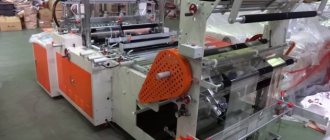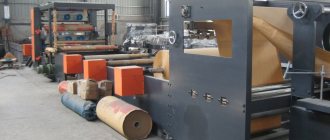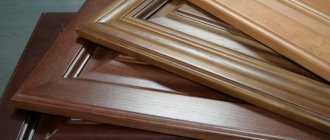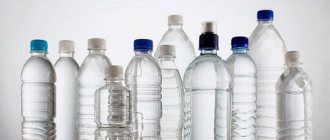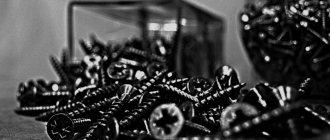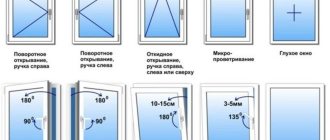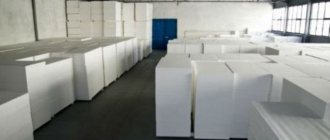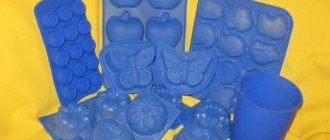Technological progress today has reached a level where any entrepreneur is able to open his own business in the field of production. This was made possible due to the latest developments in the field of machine tools and new production methods.
One of the interesting and popular production options that will remain relevant for many years is the production of polyethylene film. There are also risks in the form of mass abandonment of these products in favor of biodegradable materials, but complete abandonment will take many years, which means that you have several years left in which you can make a good profit.
Own business: production of packaging film
Opening a small plant for the production of polyethylene film is an excellent investment. Packaging materials will always be in demand. In this case, your clients are any manufacturers who require packaging film. You can also try to find clients among builders or logistics companies - they often buy stretch - a material used to fasten large objects to increase the stability of the load. Film production is a high-tech, interesting and profitable business.
Product varieties
Equipment for the production of stretch film is an integral part of the workshop. However, you should choose it depending on what kind of material you will be making. As for the types of film, the following types can be distinguished:
- Kling film. It is very thin and stretchy. This material is most often used for individual packaging of products.
- Polymer films. They are thick and are intended for packaging non-food products. This product can also be used to wrap large quantities of items for transportation.
It should be noted that the machine for the production of stretch film is also selected depending on the type of extrusion:
- blown;
- flat-slit.
Equipment for the production of polyethylene film
The main machine for producing polyethylene film is called an extruder. Additionally, various machines that provide the process of painting polyethylene fabric can be used as equipment for film production. The cost of such equipment is about eighty thousand dollars. There are various models, the main difference of which is the productivity and quality of the resulting material. The cost of the machine most suitable for flow production will be one hundred thousand dollars.
There are machines from three manufacturing countries: Russia, China and the USA.
Russian machine tools are the most affordable, but the machine tool market in Russia is in its infancy, which is why various “childhood diseases” can arise with the equipment. Errors in the software, malfunctions, asymmetry of the resulting canvas.
Chinese machines are quite reliable and easy to operate, but the resulting material is of low quality. The fact is that Chinese requirements for the product are much more loyal. The Russian buyer demands high-quality goods for the smallest amount.
American machines are the most reliable, but their cost is corresponding. With similar performance parameters, they can be twice the cost of Russian analogues. This also includes delivery costs. It is also worth noting the complexity of managing such equipment - it requires high qualifications. It is also worth noting the high requirements for the quality of raw materials. However, with proper preparation, the resulting polyethylene film will be the most durable and high quality.
Film production
Polymer film is one of the most common packaging materials. The film reliably protects the product from contact with the external environment, is durable, practical, affordable and allows you to convey all the advantages of the product offered. A large list of advantages of polymer packaging automatically leads to great demand for the product and, accordingly, the prospects for expanding the production of polymer film or entering this market.
Success in film production is due to a combination of quality raw materials, equipment and qualified personnel. The problem with the equipment is resolved by contacting the company, for which one of the directions was the sale of a film extruder. The peculiarity of the latter is the presence of a special flat-slit head, which ensures shaping and obtaining a film of the required width and thickness. At the same time, the presence of special devices and the use of special technical solutions makes it possible to produce single-layer, two-layer, and three-layer films.
Main characteristics of film extrusion lines:
- performance;
- materials available for processing (LDPE, HDPE, universal);
- technical parameters of the film (thickness, sleeve or full width).
Where to buy a film extruder?
If you are thinking about the need to buy a film extruder for your company, then our company will help you solve any complex task. When you contact us for the sale of extruders, you receive the following advantages:
- professional selection of equipment for specific client tasks;
- prompt delivery to the buyer's warehouse;
- carrying out commissioning works and personnel training (if necessary);
- warranty and post-warranty service.
- heat treatment of the material cylinder where the screw rotates to reduce wear;
- the presence of protection against overloads, jamming of the auger;
- the ability to install inverters to adjust performance and obtain stable quality;
- complete set and subsequent sale of film extruders with additional equipment upon individual order.
By choosing us among suppliers of extrusion lines, you get high-quality equipment that will last for many years. This is guaranteed by the following factors:
You can clarify any questions regarding the sale of extruders by calling any of the company’s contact numbers. We are ready to promptly provide additional information and develop a commercial proposal for your company.
Technology for the production of polyethylene film
This product goes through nine production stages. It all starts with the purchase of special polymer granules - these are special granules from which the final product is subsequently obtained. For the production of plastic bags or films, low-density polyethylene granules are used. This is an accessible material obtained as a by-product during the distillation of oil.
The granules are loaded into a special machine - an extruder. There they reach a high temperature under pressure, causing them to further melt. It occurs at a temperature of about one hundred and fifty degrees Celsius. During melting, the granules turn into a homogeneous substance. Then the film begins to emerge from the extruder. At the outlet there are special cooling devices, thanks to which the polyethylene hardens and takes the required shape. Depending on the setting, the polyethylene film can be of different thicknesses and widths.
The resulting film is fed to the next machine - it winds the material onto a special roller. This roller can be made from wood waste. In the future, such twists are grouped. Some of them are sent for further processing, the other part is for sale in the form of plastic film or stretch (a special film that is used to fasten and increase the strength of small cargo).
A pattern can be applied to the film - this is done with ordinary paint. Depending on the thickness of the paint and the selected shades, you can achieve complete opacity of the film. Colored polyethylene film is also sold. Most often, it is bought by various branded stores, which wrap goods in it for the end consumer. However, it is most often used for packages.
To produce bags, two identical pieces of film are taken, they are sealed at the edges, and cut in a special way. The resulting products are packaged, undergo quality control and sent for sale.
Equipment for the production of stretch film: selection of machines and technology of work
The group, in addition to selling polymer equipment, is a manufacturer of stretch film in the Samara region, and in this article we will tell you what you need to know before starting the production of stretch film.
Before purchasing equipment, our clients can always come to our production site, see our equipment in operation and consult with leading specialists!
Stretch film is a stretchable plastic film used for packaging any goods or cargo, in particular on pallets. Currently, stretch film is increasingly used in various spheres of life. For its production, special equipment is used; it is quite simple in its understanding, but its cost is relatively high.
From the many characteristics of stretch film, we can highlight the main advantages of its production :
- Simple manufacturing process;
- Constantly growing demand for products;
- Low cost of raw materials;
- Long storage period.
Primary stretch film is durable and transparent, which means it does not contain toxic substances or dyes, which makes the product completely safe and allows you to store food products.
Raw materials for production:
The film itself is an elastic packaging material that is resistant to punctures, impacts and squeezing, which means its main characteristic is strength. To produce a quality product, you will need equally high-quality raw materials.
The raw materials for the production of stretch film are LDPE , linear polyethylene (LLDPE) and liquid glue (adhesive) . They are purchased from industrial enterprises. You can also produce granules yourself, from recycled materials, but for such manipulation you will need a granulator.
Depending on the raw material and the type of extruder, different types of stretch film are produced, suitable for a specific product application.
Product types:
It is necessary to choose equipment for the production of stretch film based on what material and from what raw materials you will produce.
Stretch films can be divided into two groups:
1. Kling films. These are stretchable films of small thickness. Their areas of application are mainly limited to individual packaging of food products. The thickness of cling films ranges from 5 to 11 microns. They can be classified as stretch wrap films.
2. Polymer films. They are used in industrial enterprises and in agriculture for packaging non-food products, group packaging and when transporting consignments of goods. Their thickness ranges from 13 to 30 microns. Such stretch films are classified as packaging films.
It should be noted that the machine for the production of stretch film is also selected depending on the type of extrusion:
- blown;
- flat-slit.
Composition of the production line.
If you decide to organize the production of stretch film, you will need several machines, which you can purchase separately, or use an automated line for the production of stretch film, the purchase of which will cost from $20,000. It consists of the following machines: extruder, edge reclaimer, chiller, compressor, automatic roll winding station, pneumatic shafts, edge selection. Average productivity of modern lines: 30 – 150 kg of film per hour.
An extruder is a machine for continuously processing polymer raw materials into a homogeneous melt and giving it shape by pressing through an extrusion head and a special calibrating device.
There are two main methods of film extrusion: blown tube extrusion and flat-slot extrusion. The first method produces a film tube that can be folded or cut, while the second method produces a flat film.
In flat-slit extrusion, the polymer melt is forced through a forming head; after leaving the head, the film sheet must be cooled to prevent the growth of large spherulites. To do this, a water bath or a cooled drum is installed in the immediate vicinity of the head. Rapid cooling prevents the growth of spherulites, which makes it possible to obtain films of high transparency. After this, the finished material is sent for packaging, packing and storage.
Main components of a blow molding extruder Flat slot extruder head
You should approach the choice of an extruder responsibly and pay special attention, because this is the most important element for the production of stretch film!
Let's now look at the main stages of stretch film production using the example of a flat-slit extruder. For all polymers, the algorithm is approximately the same, and it looks like this:
Raw materials are loaded into the extruder hopper. Most often this is a granular polymer, although in some cases it may be shredded recycled materials.
Using a screw design, the granules are moved to the heating zone, where electric heating elements are located. An important technical requirement for them is the ability to accurately regulate the temperature, since different polymers need to maintain different temperature conditions. The screw simultaneously stirs the raw material until it becomes a homogeneous mass.
The prepared melt is fed to the extruder head, where it is given the required shape. Since the most common type of product obtained in this way is film, we will consider this stage using its example. To produce the film, a flat-slit head is used, through which a film of micron-thick polymer material is extruded.
Next, the products enter the elevator (drum), a device on which the products cool and take their final shape and go to the stretching cascade.
The resulting products are processed in different ways: from winding into bobbins to slicing and other manipulations.
What is an extruder screw?
A typical extruder contains a main working element - an Archimedean screw (screw) , which rotates inside a heated cylinder. Polymer granules enter through a hopper mounted at one end of the cylinder and are moved forward by a screw along the cylinder to the head. When moving forward, the granules are melted due to contact with the hot walls of the cylinder and due to the heat generated from friction. Heating by friction (exothermic heat) is very noticeable in modern high-speed machines and can provide all the heat required for steady flow; external heating is only needed to prevent the machine from stalling on start-up when the material is cold. The screw then forces the molten polymer through a die, which determines the final shape.
Typically, the screw design is selected according to the type of polymer being processed. Augers are characterized by their length to diameter ratio L/D and compression ratio. The compression ratio is the ratio of the volume of the screw turn at the feed hole to the volume of the turn at the side of the head. Typically, single screw extruders use screws with an L/D ratio of 15:1 to 30:1 and a compression ratio of 2:1 to 4:1.
What additional options can be purchased for the extrusion line?
- Raw material autoloader
Often included, vacuum loaders are designed to automatically feed raw materials into the extruder hopper. Polymer materials are supplied continuously, which allows loading on time and with minimal losses of raw materials. The supply of raw materials occurs in doses, ensuring non-stop operation of the equipment. Feeding raw materials using a loader increases production productivity.
- Automatic hydraulic filter.
If you do not purchase an automatic filter replacement system, you will sometimes have to replace it manually, while stopping the extruder. The structure of a hydraulically driven slide filter is represented by a housing, under which is mounted a plate with space for mounting meshes. Filter sets are fixed on special lattice surfaces. The molten polymer mass is fed into the hydraulic filter, and, bypassing the filter meshes, it enters the molding department. The main working element of the filtration system is the gate, which moves both vertically and horizontally in the space available to it. Due to this, the system with filter meshes is fed one by one. The filter must be replaced when the pressure of the molten raw material in front of the mesh increases. The movement of the gate element is carried out under the control of a hydraulic drive very quickly, so replacement of worn-out components can be carried out by a specialist without stopping the operation of the entire system.
- Edge processing device
The production of polymer products, like any other, does not occur without the generation of waste. It would be irrational to dispose of something that can be put back into production after a minimum recycling cycle. Using pneumatic transport, the raw materials enter the crusher, where the edges are crushed to sizes of 3 - 5 mm; The crushed waste enters the cyclone to remove dust; Then the remaining raw material is sent to the extruder loading device using a screw.
- Water cooling (chiller)
Chillers are necessary for cooling the extruder, because the quality of the finished polymers depends not only on the overall power of the extruder and the components of the raw materials, but also on scrupulous adherence to all manufacturing technologies, for example, such as maintaining a favorable temperature of the extrusion line.
- Adhesive Additive
Allows you to evenly distribute liquid glue over the film, making its quality much better.
- Rewinder
A rewinder is needed to rewind large-diameter rolls wound on an extruder (Jumbo roll) into rolls ready for sale. Most rewinders come complete with a weighing device.
Now you know what types of films exist, what a film extruder is and on what principle it works, you know how to distinguish the sleeve extrusion method from the flat-slot extrusion method, and you also understand what additional options are useful in the production of stretch film. And in the next article we will introduce you to the granulation line, and also tell you what types of granulators exist and how they will be useful in your production.
By contacting the Group , you are guaranteed to receive high-quality advice on extruders, granulators, rewinders, slitter rewinders and other types of polymer equipment. You can order equipment, clarify the cost and other necessary information by calling or leaving a request on our website.
You can get acquainted with the range of our equipment and its technical characteristics in the catalogue.
Product requirements
The resulting product must meet the requirements of GOST. The main requirement is the strength and elasticity of the material. In cases of non-compliance, the buyer has the right to make claims to the manufacturer.
High-quality polyethylene does not tear and can withstand high loads. However, it is susceptible to temperature changes, so it is not used in the sun or frost. Strong heating leads to a loss of strength - the material melts. Frost affects elasticity - it decreases noticeably, and at extreme temperatures, polyethylene can even crack and become an absolutely useless material.
Where to open production?
If we talk about geography, there are several profitable options for opening such a production. Let's look at the most popular ones, which will definitely be relevant in the coming years.
China
China is definitely in first place. Today this market is developing most actively and is the most attractive place for investment. It's all about actively attracting foreign investment from the Chinese government. There are various benefits for foreign businessmen, thanks to which, even at the stage of opening and launching a project, it becomes possible to compensate for some costs.
pros
- Cheap land;
- Available labor force;
- Available raw materials;
- Wide selection of equipment;
- Excellent infrastructure;
- Huge market.
Minuses
- Legal difficulties;
- High competition.
Mexico
Another interesting option is opening a plant in Mexico. This option may seem dubious to many, but it has several undeniable advantages. The main one is the presence of one of the largest sales markets nearby - the USA. You can also buy the latest equipment for production there, but such a business also brings with it some problems. The main one is raw materials. In addition to the high price, in the USA there are also many requirements for the quality of polyethylene.
pros
- Available labor force;
- The government is loyal to foreign business;
- The presence of one of the largest markets - the USA;
- Wide selection of quality equipment.
Minuses
- Poor quality infrastructure;
- Expensive raw materials;
- High competition.
Poland
Poland may be an equally interesting option for residents of the European part of Russia. Today, this European country shows the highest rates of development and in the future may become one of the leading economies in Europe. Entering such a business today is the decision of many experienced investors from all over the world.
pros
- Cheap labor compared to other European countries;
- Possibility of entering the European market;
- Wide selection of quality equipment.
Minuses
- The Polish government actively promotes the concept of protectionism;
- Strict requirements for raw materials and their quality;
- European countries set quotas on the use of polyethylene, which is why the market does not seem so attractive;
- High competition.
Russia
Opening your own production in Russia seems to many to be too reckless an idea due to instability in the economy. Many entrepreneurs prefer commercial activities as more attractive and less risky. However, it is worth immediately noting the fallacy of this belief. The government is committed to import substitution, which means that domestic producers can always receive a variety of subsidies and preferential loans.
pros
- Available labor force;
- Available land;
- Opportunity to take advantage of subsidies;
- Lack of strict requirements for product quality.
Minuses
- Unstable economic situation;
- Difficulties when working with foreign markets;
- The presence of much more promising areas of production.
Label production equipment
Machines for making self-adhesive thermal labels work with various types of paper and polypropylene film. They provide uniform tension and smooth winding, allow you to choose the diameter of the sleeve, and guarantee the accuracy of rotary die-cutting and cutting.
The equipment of Prompostavka LLC makes it possible to offer a wide range of cardboard packaging, polymer films and bags, materials for palletizing and labeling. Modern equipment minimizes the risk of technical defects and overlays during the production of large batches. Our own production allows us to reduce the customer’s costs by purchasing from the enterprise and be fully responsible for quality. Delivery of finished products is carried out throughout Moscow, the region and throughout Russia.
Raw materials for the production of plastic bags
Traditionally, ethylene and propylene are used to produce polyethylene. These are by-products that appear after the primary processing of oil. By polymerization, special granules are obtained - low-density polyethylene. Subsequently, these granules are loaded into a special machine - an extruder, and the finished product is obtained at the output. One kilogram of low-density polyethylene in granules costs around 100 rubles per kilogram. It is purchased in tons, due to the high production speed.
Low pressure film
What is the difference between low pressure film and LDPE?
The main difference between these materials is their scope of application. HDPE is more suitable for making plastic bags because it is thinner and stiffer than LDPE. Moreover, its elongation is somewhat lower, and its strength is greater. Also, the produced HDPE film is more suitable for storing food, which makes it more popular in the food industry. Therefore, if you need to provide your production with a sufficient amount of high-quality packaging, then low-pressure film is perfect for you.
LLC "Polimax" is ready to provide any enterprise or any store with HDPE film in large volumes at wholesale prices. This will allow you to save enough money and time. You will be able to regularly contact our company and enter into a long-term partnership, which will always be beneficial for a large manufacturer who needs high-quality packaging for their products.
Offer line range
Thickness from 10 to 45 microns.
Width from 500 to 2000 mm.
It is possible to produce color and folded films.
Requirements for premises and personnel
A manufacturing business always requires adherence to strict rules and regulations. The reason for this is the experience of other manufacturers, which proves the need to strictly follow the instructions. Often these instructions are difficult to understand, which creates a need for highly qualified employees. In the case of chemical production, competent technologists and operators will be needed.
Room
To produce polyethylene products, you will need a room with a constant temperature regime. Higher or lower temperatures can negatively affect the quality of the resulting product. It is also necessary to ensure that the products and raw materials are not exposed to sunlight. Raw materials must be stored in opaque containers, protected from moisture.
Staff
The staff should include several competent specialists with specialized education. They will become an excellent basis for the further development of the enterprise. Each employee must undergo a special medical examination monthly. This is due to stringent requirements due to constant contact with chemical products.
Expenses and income
Launching such a business is a complex task and requires special knowledge. Therefore, the consumable part will be quite massive. However, the income from such a business will be quite high, and the profitability can be up to twenty percent, which is an excellent indicator.
Expenditure part
Equipment - 6,800,000 rubles;
Premises and its preparation - 4,760,000 rubles;
Employees and their salaries (first year) - 8,840,000 rubles;
Raw materials (first year) - 50,000,000 rubles.
Total - 70,400,000 rubles.
Revenue part
We are only interested in raw materials. With a cost of 50,000,000 rubles, you can get finished products worth 83,232,000 rubles. A total of 33,232,000 rubles in profit excluding taxes, electricity costs, etc.
This calculation is suitable for large-scale production, which works primarily with wholesale buyers or large retail. For small-scale production, it is worth reducing the costs of raw materials and employee salaries. However, it is worth considering that equipment costs cannot be significantly reduced.
Equipment for the production of stretch film
Specialized stretch film extruders are used to produce two types of products from different compositions. We produce materials for manual and machine industrial packaging from primary raw materials and secondary granulate from waste processing in the form of sheets and sleeves. The equipment is equipped with systems for thickness selection, tension control during winding and cutting.
Marketing strategy
The most competent strategy in this case would be to aggressively enter the market and conclude short-term contracts with very low prices. This will allow, although working at a loss, to maintain working capital at a sufficient level. After production has been launched and perfected, it will be possible to start gradually increasing prices. In this way it will be possible to achieve the most advantageous positions in the market.
It is best to advertise such production on specialized resources: construction forums, exchanges of logistics companies, retail forums. It is necessary to contact the client directly, explaining to him the need to use the services of your production. In this case, a visual method will work best - show that your products are of the highest quality and durable.
Representation of the company at exhibitions and conferences
Another interesting way of promotion is participation in annual exhibitions and conferences. There are a lot of manufacturers of polyethylene products, and competition among them is high. They often organize exhibitions where they demonstrate their products. These same exhibitions are sometimes visited by potential buyers who can immediately sign several lucrative contracts.
Working with chain stores or small retail?
In the case of large-scale production, the most profitable client is large networks. They provide constant sales. However, chain stores are very sensitive to product quality and do not like defects. If a defective batch is discovered, as a rule, the management of a chain store immediately cancels any agreements and rushes to find a new supplier. This is the main difficulty in working with them. Small retail is much more loyal to quality, plus the pricing policy turns out to be much more profitable. However, it is worth considering the fact that it will not be possible to achieve high sales volumes when working with small retail.
Further development of the enterprise
Before further development of the enterprise begins, it is necessary to ensure that the current production capacity is fully utilized and meets existing demand. If supply exceeds demand, you will either have to store the products, which incurs additional costs; or reduce prices, which will negatively affect the economy of the enterprise. It is best to create new production facilities for a specific client. This method is the most reliable and practically eliminates all kinds of risks.
Extruders for the production of polymer films
For the production of heat-shrinkable, packaging, agricultural films LDPE, HDPE, PSD, PVC, blown and flat-slit extrusion lines are used, which differ in the forming tool. They provide a continuous production process with heating of raw materials, plasticization, homogenization and feeding of the melt through a die to produce a sleeve or a die for the web. The winding and cutting system allows you to obtain rollers of the desired width.
